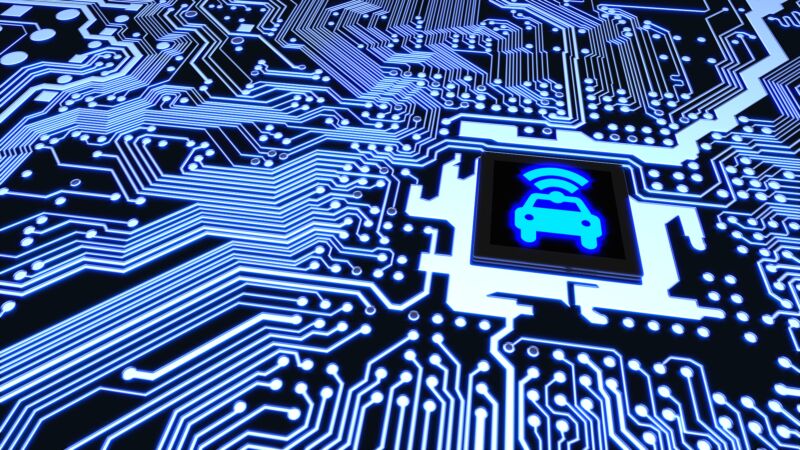Car software patches are over 20% of recalls, study finds

Getty Images
Software fixes are now responsible for more than 1 in 5 automotive recalls. That’s the key finding from a decade’s worth of National Highway Traffic Safety Administration recall data, according to an analysis from the law firm DeMayo Law. While that’s a sign of growing inconvenience for drivers, the silver lining is that a software patch is usually a much quicker fix than something requiring hardware replacement.
“Our analysis suggests we’re witnessing a shift in how automotive recalls are handled. The growing number of software-related recalls, coupled with the ability to address issues remotely, could revolutionize the recall process for both manufacturers and vehicle owners,” said a spokesperson for DeMayo Law.
In 2014, 34 of 277 automotive recalls were software fixes. The percentage of software recalls floated around 12–13 percent (apart from a spike in 2015) before growing steadily from 2020. In 2021, 16 percent of automotive recalls (61 out of 380) were for software. In 2022, almost 22 percent of recalls were software fixes (76 out of 348), and last year topped 23 percent (82 out of 356).
Leading the way was Chrysler, with 82 different software recalls since 2014. Ford (66 recalls) and Mercedes-Benz (60) are the two runner-ups. Meanwhile, Tesla ranks only eighth, with 26 software recalls since 2014, which puts it on par with Hyundai (25) and Kia (25).
Electrical systems were the most common problem area, which makes sense—this is also the second-most common hardware fix recall and would probably be the top if it were not for the massive Takata airbag recall, which has affected more than 100 million cars worldwide.
The other common systems affected by recalls requiring software remedies were related to backover prevention—whether that be reversing cameras, collision warnings, or automatic emergency braking—airbags, powertrains, and exterior lighting.
It should be noted that not all recalls involving a software fix are to solve a software problem. Take the recent Jaguar I-Pace recall, which was triggered by battery fires caused by battery cells damaged during assembly. Jaguar’s fix? A software update that sets a new, lower limit to the storage capacity of the battery pack, preventing it from fully charging to 100 percent.
While many older vehicles from legacy OEMs require a trip to the dealer to be patched, more and more new models can be updated over the air, meaning that owners can have the recall performed from the comfort of their own parking space, provided they have connectivity. Even this isn’t hassle-free, though, as some Rivian owners found out to their dismay late last year when an update broke some infotainment screens.
Expect this to become more common
To hear carmakers tell it, customers see their smartphone and games console and want that kind of entertainment built into their next car. (Whether that’s true is up for debate, however.) Software competency is a new battleground between global automakers, and the fear of Chinese brands is strong despite an impending ban on Chinese-connected car software, which looks likely to be put into effect in a couple of years.
So, it’s highly likely the trend of fixing product flaws with software will only escalate, particularly with the introduction of software-defined vehicles. This represents a clean-sheet approach to designing a car, with a handful of powerful computers replacing tens of dozens of black boxes, each with a single function. Which is great when it all works, but it’s a headache when there are problems.
Car software patches are over 20% of recalls, study finds Read More »
